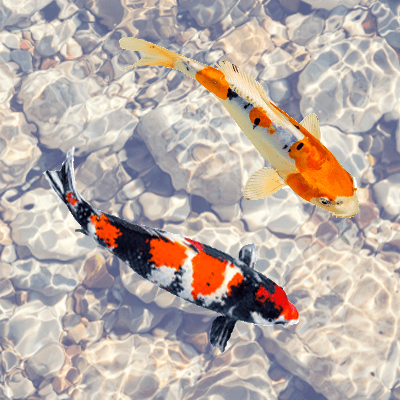
About Koi
Koi fish are colorful, ornamental versions of the common carp. During the 1820s, Japanese farmers kept and bred the prettiest, most colorful carp, resulting in the koi we see today. This species was originally farmed for food. The word “koi” comes from the Japanese word for “carp.”
Habitat
Wild koi are native to fresh bodies of water around the Black, Caspian, and Aral Seas.
Diet
They eat mainly invertebrate animals, but also eat fish eggs and decomposing animals and plants. They eat food found at all depths of water.
Family Life
Koi will migrate long distances to reach their preferred spawning grounds – flooded meadows or marshy areas. They attach their sticky eggs to water plants or any object underwater. The eggs hatch as larvae and stay in warm, shallow flooded areas until they are big enough to swim in more open waters.
Conservation Status
The conservation status of the Koi is classified as vulnerable.
Threats
- The main threats koi fish face are habitat modification, fragmentation, and destruction. This includes damming and agriculture practices that negatively impact koi’s sustainability. The pollution of freshwater habitats also poses a serious threat to the conservation of koi fish.
- Overfishing poses another threat to this freshwater species. With growing human populations, there is a growing need for protein sources and freshwater fish are an accessible resource.
Facts about Koi
Class:
Actinopterygii (ray-finned fishes)Order:
CypriniformesFamily:
Cyprinidae (minnows or carps)Genus:
Cyprinus (layman)Species:
Cyprinus carpio (layman)Life Span:
40 yearsSize:
2-3 feet (60–90 cm)Weight:
12 pounds (5.4 kg)
Fun Facts
- The oldest koi fish on record was 230 years old. The age was determined by testing the fish’s scales, which produce growth rings much like a tree.
- Koi are often seen as symbols of good luck and determination in Japanese culture.
- The koi breeding industry can be quite lucrative, with rumors of individual show-quality koi selling for hundreds of thousands of dollars.